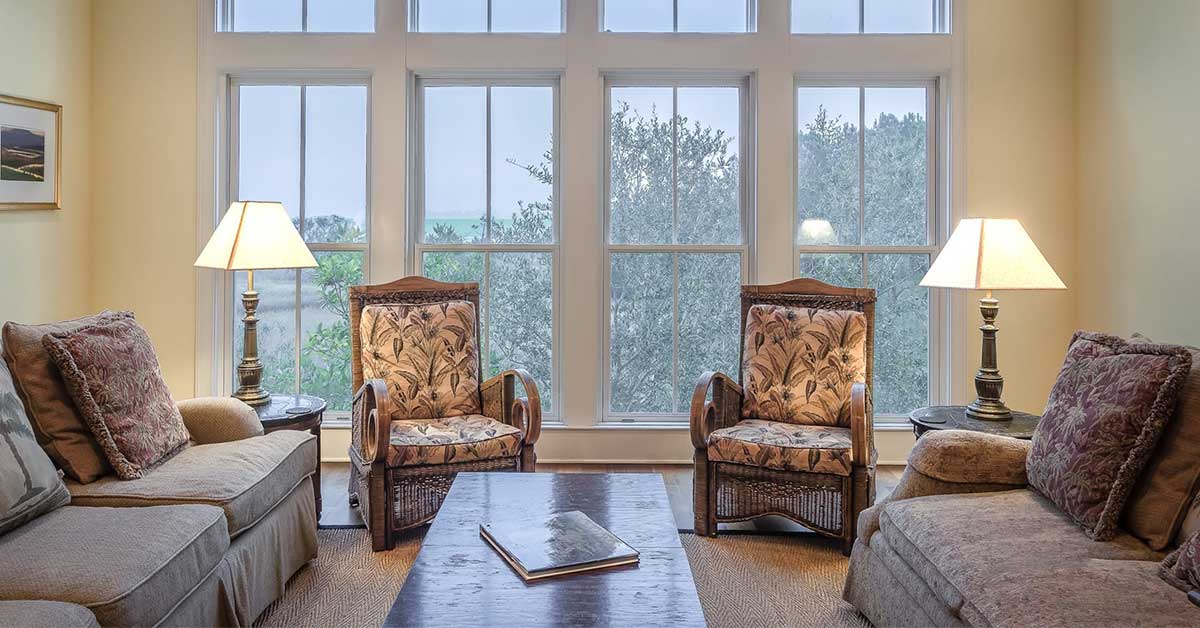About one million Americans live in some type of senior living community and the global population of people aged 80 and older is expected to triple from 2015 to 2050 according to the National Institutes of Health. Senior citizens have likely spent a considerable amount of time in their previous residences and may feel reluctant to move to a nursing home or assisted living facility. For this reason, long-term care facilities are faced with the unique challenge of creating a place that truly feels like home, despite it being totally new.
Because long-term care facilities are often all-inclusive, providing meals, transportation, cleaning, maintenance and social events in addition to care, residents are often faced with high living costs. It is not uncommon for facilities to charge $10,000 per month, so they must always look their best. Residents’ family members also expect these places to deliver comfort and cleanliness. Additionally, the coronavirus pandemic has forced many long-term care communities to implement lockdowns and increase cleaning frequency to protect the elderly and staff. For these reasons, facility managers must understand the importance of regularly cleaning carpet.
A need for carpet care
Every clean space starts from the bottom up, meaning facility managers in nursing homes should prioritize carpet maintenance. These care communities want to provide a high quality of life for their residents. When the carpet looks good, the residents, and their families, feel good.
However, long-term care facility carpet is often susceptible to stains. Residents of varying abilities are living in close quarters with one another, making spills an inevitable occurrence. Not only will there be food and drink spills, but there is greater risk for bodily fluid stains in these environments as well. Thus, carpet in nursing homes can quickly become ridden with noticeable stains and even embedded soils, which can permeate odors and particles into the atmosphere. Consistently cleaning carpet helps keep spills from becoming permanent stains.
Especially now, cleaning is essential. Seniors are particularly vulnerable to illnesses such as the fast-spreading COVID-19, and nursing homes are scrambling to keep residents from contracting the disease. SARS-CoV-2, the virus that causes COVID-19, can linger on hard surfaces and even soft surfaces like carpet for several hours or even days. With proper cleaning, facilities can reduce the risk of spreading infection and ease their residents during a stressful time.
The benefits of a low-moisture system
Low-moisture encapsulation systems are ideal for cleaning carpet in long-term care facilities. These systems offer numerous benefits, including:
- Fast drying time: Low-moisture encapsulation uses less water per square foot, allowing carpet to dry in 30 minutes. Facilities can then reopen carpeted area to residents and staff members more quickly than alternative methods allow.
- Thoroughly removing stains: Dirt and stains greatly impact the appearance of carpet. Encapsulation can target both visible stains at the surface in addition to soils that are embedded deep into carpet fibers.
- Supporting indoor air quality: Some carpet cleaning systems release volatile organic compounds, which impact indoor air quality (IAQ). These chemicals can be especially irritating for seniors with allergies or respiratory sensitivities like asthma. The encapsulation approach to carpet care supports IAQ, as it has no VOCs and thoroughly removes soil particles and contaminants from carpet.
- Promoting sustainability: Look for a product that is certified by Green Seal®, a non-profit environmental certification organization. Low-moisture systems use 3 to 12 times less water than other carpet cleaning methods. They also expend less electricity, less noise and zero water or VOC waste, giving them LEED status.
Reducing carpet maintenance costs
With a low-moisture encapsulation system, facility managers can achieve the following savings:
- Labor: This easy-to-use option has a simple training process, which is especially important in facilities that have high employee turnover. Additionally, a compact, ergonomic machine will result in less exhaustion and strain for workers.
- Time: Alternative hot water extraction methods require an ample amount of time for the carpet to dry. With encapsulation, carpet that would otherwise need to remain untouched for up to 12 hours is dry in just 30 minutes.
- Cost: Low-moisture systems reduce the risk for mold growth, extend the life of the carpet, minimize training and clean up to 16,000 square feet per hour, which shortens cleaning shifts. All of these benefits will result in short-term and long-term cost savings that support the bottom line.
Cleanliness in long term care facilities
Long-term care facilities are unique in that they house a group of people with specific needs. Pair that with high cost and frequent foot traffic from visiting family members and friends, and carpet care becomes a necessary practice to maintain cleanliness and appearance.
To support resident health and wellbeing, it is imperative that nursing homes, assisted living residences and memory care centers use the right carpet care equipment, chemistry and tools to clean and maintain carpet. It’s up to the manager to put the right program in place and adequately train workers to use the system properly. Especially with concerns around coronavirus, these facilities not only need to keep carpet looking its best, but maintain it in a way that removes potential contaminants to support resident health.
Now, more than ever, long-term care facilities need to do everything in their power to clean thoroughly to reduce the spread of potentially harmful pathogens.


